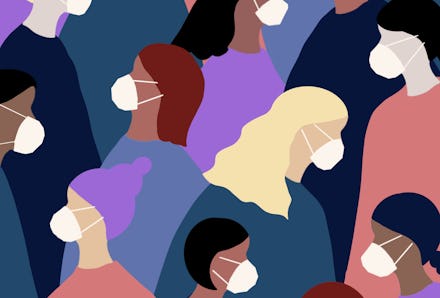What would a second wave of coronavirus look like?

All 50 states are reopening to some degree. And while a return to some semblance of normal may be cause for celebration — with Memorial Day crowds swarming beaches in some places — it also raises fears about a resurgence of COVID-19, which scientists predict could occur when summer subsides, CNN reports. But what will a second wave of coronavirus actually entail?
A second wave would involve a steady increase in infections that could emerge in various places at various times, CNN explains. The size of the affected community would factor into whether it would count as a “true second wave,” Anthony Fauci, director of the National Institute of Allergy and Infectious Diseases, told Newsweek — a second outbreak among the likes that hit, say, Chicago, Detroit, or New Orleans, would qualify.
We might not see a second wave right away, though, which could lull citizens and local leaders into complacency, per the New York Times. It takes an average of five days, and up to 14, for a person infected with the novel coronavirus to show symptom, the Washington Post reports. Getting tested and receiving results can also take time. All of this means we may not see the reopening’s effect for another one or two months, former Baltimore health commissioner Leana Wen told the Post.
We might not see a second wave right away, though, which could lull citizens and local leaders into complacency.
As many states report a stable number of daily COVID-19 cases, even more are grappling with a daily rise in cases, Newsweek reports. Our level of preparation from June to September will be critical in determining whether these evolve into a second wave, Fauci told the outlet.
"We have four months to make sure we have in place the system, the test, the capability, the manpower to do the kind of identification, isolation and contact tracing as cases begin to reappear in the fall, because they will reappear,” he said, per Newsweek.
As states roll back shelter-in-place orders — despite seeing an increase in cases or failing to meet the safety criteria for reopening, in some instances — many experts forecast a second wave even before fall, in the form of sudden, smaller waves rippling across the U.S., the Times reports. Dallas, Southeast Florida’s Gold Coast, all of Alabama, and other places in the South that have rushed to reopen could expect a second wave in the coming weeks, according to a model developed by PolicyLab at Children’s Hospital of Philadelphia, per the Post.
The counties of Crawford, Iowa; Texas, Oklahoma; and Colfax, Nebraska, where the case count is growing rapidly, may also face an especially increased likelihood of resurgence, according to the Post.
A huge worry is that the second wave of coronavirus could overlap with the flu season, which starts in October, per Reuters. In response, pharmacy chains are ordering more doses of the flu vaccine than usual, and drug companies are boosting production.
Even scarier than a second wave would be second peak— an abrupt, steep rise in cases. Many more infections would emerge at the same time, likely during flu season in the fall or late winter, per CNN. The combination of flu and COVID-19 hospitalizations would overwhelm the healthcare system, which, in turn, result in a spike in preventable deaths among people with cancer and other diseases who may need to delay treatment, as well as emergency patients.
Again, it’s about flattening the curve, or extending the amount of time it takes the novel coronavirus to jump from person to person, rather than allowing it to infect a bunch of people all at once, Gabe Kelen, director of the department of emergency medicine at Johns Hopkins University, told CNN. He doesn’t think we’ll see the same widespread closure of businesses, schools, and other communal places like we did in the spring. That means staying at home as much as you can, practicing the six-foot distance rule, wearing a mask in public places, and getting a flu shot will be crucial in the months ahead. An easing of restrictions is just that — it doesn’t mean the virus has left us.